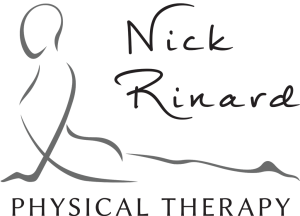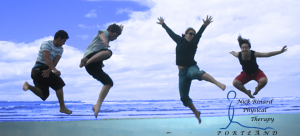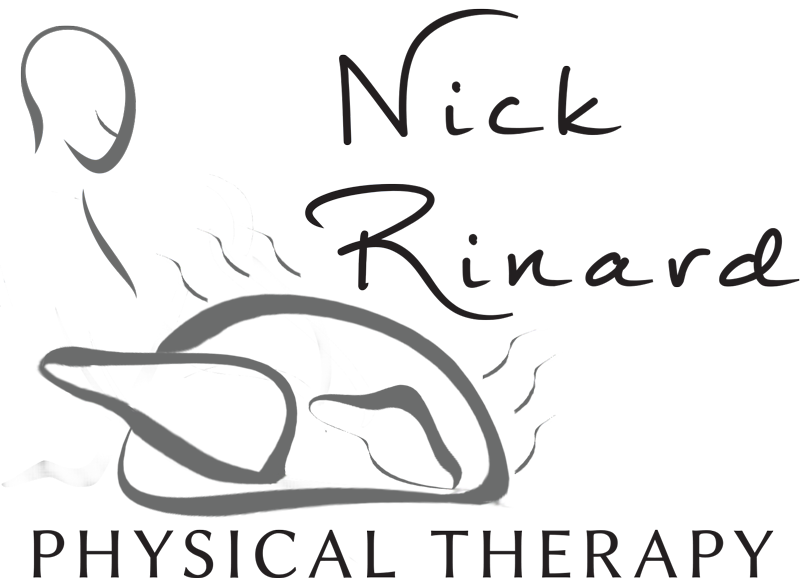Seeing a physical therapist first for low back pain decreases overall out of pocket costs, opioid use, and less ER visits.
Study from the University of Washington and George Washington University
A study split patients into three groups. The first group saw a physical therapist first “PT first” group. A second group was “PT later” group, as they saw another provider initially, but eventually had physical therapy. The last group was “No PT” as they never had physical therapy.
This study found that the group that saw “PT first” for low back pain had lower costs for care vs the “PT later” and “No PT” groups (this includes what they are paying out of pocket). The “PT first” group also had lower costs with emergency room visits, imaging, and opioid use.
Physical Therapy reduces prescription medication use
What this means is that seeing a physical therapist can not only reduce your pain and use for prescription medication, it also costs you less! Since Oregon has direct access for physical therapists (by law, you do not need a physician referral to see a physical therapist), patients should be using this route directly for treatment of their low back pain. Call Nick Rinard Physical Therapy today and schedule your pain away! 503-244-6232
Source:
http://www.apta.org/PTinMotion/News/2016/2/29/PTFirstDirectAccessLBP/
More
By Nick Rinard Physical Therapy
17 Mar, 2016
Medical Advisory
climb, diet, exercise, Knee pain, knee replacement, medication, necessity, run, side effects, stairs, TKA, Total knee, walk
At Nick Rinard Physical Therapy a lot of patients come to see us with knee pain and/or knee arthritis, both before and after various knee surgeries, including total knee replacement surgeries.
Since 2010, knee replacements have been the most performed surgery on people over 45 years of age. Knee replacements are performed at the rate of 700,000 per year. Because of this increasing rate, the efficacy of pain relief and improvement of function should be investigated.
100 patients with knee arthritis
A researcher, Soren Thorgaard Skou, has done just that. In his study, he looked at 100 patients with knee arthritis and assigned them to a surgical group or non-surgical group (which received physical therapy, medication and diet education). After one year, 85% percent of the surgical group had significant improvements in pain vs 68% of the physical therapy group. The surgical group and larger gains in their ability to climb stairs and walk. However, the study also showed that the surgical group is at greater risk for complications that the physical therapy group is not. The surgical group is more likely to have blood clots or a manipulation (another procedure performed by the surgeon to increase range of motion). The surgical group had more adverse side effects vs the physical therapy group (24 vs. 6).
Physical therapy is effective
Physical therapy is effective and should be considered a viable option before jumping to surgery. If the first knee replacement can be delayed, this can decrease the necessity for a second surgery (current replacements last 10-15 years). We urge our patients to remember that we are always here for you before or after surgery. Nick Rinard Physical Therapy is a phone call away 503-244-6232 !
1/3rd of knee replacements are unnecessary
This, taken into consideration with the study that came out last summer that found nearly 1/3rd of knee replacements are unnecessary, should be considered when deciding to have a knee replacement or a trial of physical therapy to determine effectiveness.
Sources:
http://health.usnews.com/health-news/articles/2015/10/21/knee-replacement-brings-less-pain-better-function
Dr. Skou’s report (N Engl J Med. 2015 373;17:1668-9)
More
JOB OPPORTUNITY FOR PHYSICAL THERAPIST AT NICK RINARD PHYSICAL THERAPY
PORTLAND, OREGON
Position:
Physical therapist, 1 part-time and 1 full-time position available
Qualifications:
Cert. MDT or seriously pursuing certification; valid or eligible for OR PT License. High level of professional and personal excellence is expected.
Our Clinics are MDT-based, outpatient physical and occupational therapy practice, 2 Portland locations (SW Portland and by Portland Airport)
Hours:
Clinics are open 7-6 Monday –Fridays
Compensation:
• Compensation competitive for private practices in our area
• Incentive program based on productivity and leadership available
• 24 Paid Time Off days/year
• Excellent Health insurance
• Excellent Dental insurance
• 401K for individual contributions
• 3% 401K match by MDT
• 401K MDT Profit Sharing Plan
• License fee compensation
• Continuing Education allowance
• Sign-on Bonus for new grads or Relocation Assistance
Other Benefits:
• Exceptional work environment: collegial, esthetically pleasant, friendly, open, professional, conducive to learning
• This is a great opportunity for the right therapist looking for further training/mentoring in the McKenzie & MDT method
• Portland is a great place to live, offering year-round outdoor activity, coast and mountains, and a comfortable city scene
Contact:
Please EMAIL resume and letter of interest.
Michelle Tillman, office manager
Nick Rinard Physical Therapy
9700 SW Capitol Hwy, Suite 140
Portland, OR 97219
Tel. 503-244-6232
Fax 503-296-2305
- Principals only. Recruiters, please don’t contact us
- do NOT contact us with unsolicited services or offers
More
Nick came across this article about shoulder pain and MDT approach to treatment that we use at Nick Rinard Physical Therapy clinic. He thought it would be informational for our audience.
Excerpt
Case Report
Rapid resolution of chronic shoulder pain classified as derangement using the McKenzie method: a case series Maria Corazon Aytona1 , Karlene Dudley2 1 Southeastern Regional Medical Center, Lumberton, NC, USA, McKenzie Institute, NY, USA, 2 Southeastern Regional Medical Center, Lumberton, NC, USA The McKenzie method, also known as Mechanical Diagnosis and Therapy (MDT), is primarily recognized as an evaluation and treatment method for the spine. However, McKenzie suggested that this method could also be applied to the extremities. Derangement is an MDT classification defined as an anatomical disturbance in the normal resting position of the joint, and McKenzie proposed that repeated movements could be applied to reduce internal joint displacement and rapidly reduce derangement symptoms. However, the current literature on MDT application to shoulder disorders is limited. Here, we present a case series involving four patients with chronic shoulder pain from a duration of 2–18 months classified as derangement and treated using MDT principles. Each patient underwent mechanical assessment and was treated with repeated movements based on their directional preference. All patients demonstrated rapid and clinically significant improvement in baseline measures and the disabilities of the arm, shoulder, and hand (QuickDASH) scores from an average of 38% at initial evaluation to 5% at discharge within 3–5 visits. Our findings suggest that MDT may be an effective treatment approach for shoulder pain.
http://www.ncbi.nlm.nih.gov/pmc/articles/PMC3822320/pdf/jmt-21-04-207.pdf
More
 |
RinardPT
Monthly
|
Nick Rinard Physical Therapy
9700 SW Capitol Hwy Suite 140
Portland, OR 97219
Volume 7, Issue 1
January 2015
|
Megan is Now a MDT-Certified Physical Therapist!
|
| We are so excited and proud that Megan’s hard work has paid off and she is now a certified MDT therapist, just like Nick!The MDT certification is a LOT of work, requiring that several courses be taken and a thorough exam be completed in order to earn the honor of having ‘Cert. MDT’ after your name.
We hope you will join us in congratulating Megan on what has been a two-year effort for her! Those of you who have been helped by Megan know how knowledgeable she really is, and we thank you for spreading the word on how MDT at Nick Rinard PT helped you!
And in case you were wondering, she didn’t just pass the exam, she ACED IT! |
 |
Nick Rinard Physical Therapy patients get Results:
Don’t just take our word for it
“I came in to Nick Rinard PT as a result of an MVA. I came in with neck and shoulder pain, headaches daily, decreased range of motion, and limited abilities at work and home.
After treatment the headaches are gone, range of motion is back and I am no longer limited in what I can do at home or at work.
The treatment was very simple and exercises were easy to do. I appreciate the Physical Therapists’ ability to translate the proper treatment into simple user-friendly exercises.”
-Andy 12/30/2014 |
“The treatment here was very effective. The staff and therapists work very well with one another and are consistent in case management. They were able to quickly identify my issue and moved toward resolution.”
-Lucas 12/10/2014 |

Phone: 503-244-6232 | Fax: 503-296-2305
help@mdtclinics.com | rinardpt.com
|
FREE CONSULTATION COUPON
MENTION THIS COUPON AND SCHEDULE YOUR FREE SCREEN TODAY
(503) 244-6232
In just 5-10 minutes, MDT can determine if your pain is mechanical or not. If so, we can help get you out of pain and back to enjoying your life. |
Happy New Year!
 |
The beginning of a new year is so exciting! A fresh start with new goals and new beginning.
If you, like so many others, have made a resolution to get healthier this year, Nick Rinard PT may be able to help.
It is very difficult to stay active when you’re in pain!
Our MDT certified physical therapists can help keep you on track, and can teach you how to move to prevent injuries! Don’t allow pain to stand in the way of your goals!
|
Read all the Newsletters, helpful tips, reminders and more at :
http://RinardPT.com/clinical-conversations/
|
More
 |
RinardPT
Monthly
|
Nick Rinard Physical Therapy
9700 SW Capitol Hwy Suite 140
Portland, OR 97219
Volume 6, Issue 10
December 2014
|
HAPPY HOLIDAYS!
|
 |
“Weather” you want to enjoy the winter activities by simply watching the snow fall or delve into it, be it skiing, sledding, snowboarding, or hiking to the top of the mountain in your snow shoes…
|
|
Nick Rinard PT is here for you!
|
 |
|
Enjoy your favorite winter activities pain-free.
Have questions about form or returning to activity?
Nick Rinard PT is happy to answer your questions!
|
 |
Nick Rinard Physical Therapy patients get Results:
Don’t just take our word for it
“After suffering from an auto accident 3 years ago, I have lived daily with chronic pain in my arm, shoulder, back, neck, chest and ribs, and suffered from daily headaches and weekly migraines. My range of motion in my neck was very restricted.
Since coming to Nick Rinard PT, Nick and Megan have not only helped me get the mobility to almost normal in my neck, but the pain is significantly reduced. They have given me tools to be productive and self-treat the pain. I feel they have increased my quality of life in managing my pain.. They deeply care about their patients and have a very friendly staff.”
-Denese11 11/19/2014 |
“I came to Nick Rinard PT because of pain in my knee that was limiting my ability to walk long distances of 3-4 miles or more. Because I enjoy walking my dogs & hiking in the woods, I need my knee to be functional! What was discovered in the process was that the problem was really my hamstring. Once Megan and Nick came up with exercises to target that area & strengthen it, I started to see improvements. Now I can walk farther with no pain!”
-Frances 11/20/2014 |

Phone: 503-244-6232 | Fax: 503-296-2305
help@mdtclinics.com | rinardpt.com
|
FREE CONSULTATION COUPON
MENTION THIS COUPON AND SCHEDULE YOUR FREE SCREEN TODAY
(503) 244-6232
In just 5-10 minutes, MDT can determine if your pain is mechanical or not. If so, we can help get you out of pain and back to enjoying your life. |
Thank YOU!
|
Dear Friends,
The holiday season is a great time to reflect on the past year. As we at Nick Rinard PT begin to prepare for another year of helping patients, we get to look back at all the wonderful people we have had the privilege of working with in 2014. Every time that we receive a patient’s hand-written results, it makes us so happy that we have been able to impact their lives. To be able to help someone like Denese (see other side), who has been in pain for 3 years, improve her quality of life truly makes our work meaningful.
Thank you for being a part of it, and for sharing your success stories with us and others who could use our help.
|
Read all the Newsletters, helpful tips, reminders and more at :
http://RinardPT.com/clinical-conversations/
|
More
 |
RinardPT
Monthly
|
Nick Rinard Physical Therapy
9700 SW Capitol Hwy Suite 140
Portland, OR 97219
Volume 6, Issue 9
November 2014
|
Are you putting off getting help?
|
|
With the end of the year quickly approaching, NOW may be the BEST time to get the treatment you need for your aches and pains!
With an average number of visits of just 6-8, you can likely complete treatment before the end of the year (when most insurance deductibles renew). |
Nick Rinard Physical Therapy patients get Results:
Don’t just take our word for it
“Thanks for the great care and customer service. It has been lovely working with the entire group. The McKenzie (MDT) method of PT was new to me. I was a bit skeptical as to the outcomes we could realize. But, after achieving the results I now have, I must admit that this type of PT has been a particularly positive experience for me. Since beginning treatment, I have less chronic back pain from my scoliosis, the exercises required have been easy to follow & execute, and for once I am looking forward to a stronger, more physically fit life. Previously, I was certain my chronic back pain caused in some part by scoliosis was only going to get worse and handicap me for the rest of my life. I am thrilled to find how wrong I was. I am sincerely appreciative.”
-Janelle 10/23/2014 |
“My family doctor sent me to Nick Rinard PT. I thought physical therapy was going to happen to me. Naps, massage, hot water, electrocution, and other pleasant things. I was surprised to find myself in mechanical diagnosis class. I learned a lot. Thank you!”
-Jeremy 10/17/2014 |

Phone: 503-244-6232 | Fax: 503-296-2305
help@mdtclinics.com | rinardpt.com
|
FREE CONSULTATION COUPON
MENTION THIS COUPON AND SCHEDULE YOUR FREE SCREEN TODAY
(503) 244-6232
In just 5-10 minutes, MDT can determine if your pain is mechanical or not. If so, we can help get you out of pain and back to enjoying your life. |
Happy Thanksgiving!
|
Nick Rinard Physical Therapy will be CLOSED for Thanksgiving on Thursday, November 27th 2014.
From everyone at Nick Rinard Physical Therapy, we wish you a Happy Thanksgiving surrounded by friends and loved ones.
|

|
Read all the helpful tips and reminders at :
http://RinardPT.com/clinical-conversations/
|
More
 |
RinardPT
Monthly
|
Nick Rinard Physical Therapy
9700 SW Capitol Hwy Suite 140
Portland, OR 97219
Volume 6, Issue 8
October 2014
|
Pumpkin Carving Fun and Safety!
|
|
Who doesn’t love carving a pumpkin? Here are some tips to help you along :
- Don’t leave kids unattended! It doesn’t take long for an accident to occur.
- Use proper tools and never cut toward yourself or others.
- Carve the pumpkins before scooping them out. This will help prevent cuts caused by holding the pumpkin from the inside.
- Look for stencils! These pumpkins were carved by Maria and her boyfriend Jake using stencils so that even people who aren’t artists can be successful (Jake, who is an artist, took several hours to bring his Frankenstein to life!).
- If you have small children, consider painting pumpkins instead of carving! They can have fun with different colors, and you can relax knowing there are no sharp tools around.
|

Have a Safe and Happy Halloween
From All of us at Nick Rinard Physical Therapy
|
Nick Rinard Physical Therapy patients get Results:
Don’t just take our word for it
“When I entered therapy, I was suffering from constant headaches ranging from 3-6 out of 10 on the pain scale, as well as frequent dizziness. I also had decreased cognition. Through therapy and home exercises, my headaches and dizziness have entirely ended, and my cognition has greatly improved. I have much better posture and increased flexibility in my neck and shoulders.”
-Maya 09/08/2014 |
“I came in with extreme lower back pain and leg/foot numbness. I was told by Nick and Megan that I had a bulging disc. I had a less extreme occurrence prior and was misdiagnosed by another practitioner and was only given tools for pain management. Nick and Megan gave me a clear diagnosis, and clear plan, and the encouragement to complete my therapy. I am very satisfied with my treatment and would recommend Nick Rinard PT to anyone.”
-Darin 09/24/2014 |

Phone: 503-244-6232 | Fax: 503-296-2305
help@mdtclinics.com | rinardpt.com
|
FREE CONSULTATION COUPON
MENTION THIS COUPON AND SCHEDULE YOUR FREE SCREEN TODAY
(503) 244-6232
In just 5-10 minutes, MDT can determine if your pain is mechanical or not. If so, we can help get you out of pain and back to enjoying your life. |
Now a Preferred Provider with Regence Blue Cross Blue Shield
|
Nick Rinard Physical Therapy is now IN-NETWORK with Blue Cross Blue Shield!
We make every effort to make treatment affordable, and believe that we save patients time and money by providing our specialized care, regardless of insurance coverage.
Not sure of your physical therapy insurance coverage?
Nick Rinard PT checks insurance for ALL patients at no cost!
Call RinardPT today! 503-244-6232
|
 |
Read all the helpful tips and reminders at :
http://RinardPT.com/clinical-conversations/
|
More
 |
RinardPT Monthly
|
Nick Rinard Physical Therapy
9700 SW Capitol Hwy Suite 140
Portland, OR 97219
Volume 6, Issue 7
September 2014
|
Waiting to start PT after an accident can actually INCREASE your healing time
Some people are told to “rest” for 4-6 weeks before starting therapy after an accident. The problem with this? There are many things a person can do immediately after a car accident to facilitate healing and prevent dysfunction.
|
 |
All too often, we see people 6 months or more after a car accident (MVA). Without exercises at home, the picture is this: limited, painful movement of the spine or joint, global weakness, and poor posture that becomes painful when corrected.
The same is true for other types of trauma as well! Prolonged rest causes stiffness, and can lead to increased pain.
Nick Rinard Physical Therapy has a very effective treatment protocol that helps patients avoid loss in range in motion, and decrease pain!
Read more about this in our post “Why is it important to start therapy after a motor vehicle accident (MVA)“
Call today!
503-244-6232
RinardPT patients get Results:
Don’t just take our word for it
“I’ve had back pain for 3 years. My doctor and other physical therapists were unable to diagnose or treat the pain. Nick Rinard PT was able to give me exercises and treatments that have reduced the level of pain, and to make it go away following the exercises. Pain levels have gone from a level three (out of 10) to a one.”
-Gregg 08/20/2014 |
“I want to thank Ms. Megan Plante for turning my life around. When I can to your clinic suffering relentless pain and weakened from nerve trauma, and having experienced a severe drug reaction, I was not only in a state of withering health from these pathologies; I was also in a diminished mental state. Megan changed all that. With sincere dedication and intensive study and planning, she not only trained my body to a state of improved muscle function and control, she also gave me the encouragement I needed to achieve an improved mental outlook.
In short, Megan turned it all around to the point where my general health is now, in some ways, actually better than before the onset of this malady. I’ll always be grateful.”
-Terry 08/21/2014 |

Phone: 503-244-6232 | Fax: 503-296-2305
help@mdtclinics.com | rinardpt.com
|
FREE CONSULTATION COUPON
MENTION THIS COUPON AND SCHEDULE YOUR FREE SCREEN TODAY
(503) 244-6232
In just 5-10 minutes, MDT can determine if your pain is mechanical or not. If so, we can help get you out of pain and back to enjoying your life. |
Now a Preferred Provider with Regence Blue Cross Blue Shield
|
Nick Rinard Physical Therapy is now IN-NETWORK with Blue Cross Blue Shield!
We make every effort to make treatment affordable, and believe that we save patients time and money by providing our specialized care, regardless of insurance coverage.
Not sure of your physical therapy insurance coverage?
Nick Rinard PT checks insurance for ALL patients at no cost!
Call RinardPT today! 503-244-6232
|
 |
Read all the helpful tips and reminders at :
http://RinardPT.com/clinical-conversations/
|
More
By Megan Plante, DPT
29 Aug, 2014
Physical Therapy Tips
car accident, debate, education, healing, MVA, Physical Therapy, rest, ROM, training
 This is a question that seems to be in debate. At our clinic, we advise our patients to come in for treatment as soon as possible when experiencing pain in order for the fastest results. I have experienced push-back from other health care practioners who want the person to “rest” for 4-6 weeks before starting therapy. The problem with this? There are many things a person can be doing immediately after the MVA to facilitate healing and prevent dysfunction. All too often, we see people 6 months or longer after the MVA. If the patient has not been given anything to work on for exercises at home, the picture is this: limited, painful movement of the spine or joint, global weakness, and poor posture that becomes painful if corrected.
This is a question that seems to be in debate. At our clinic, we advise our patients to come in for treatment as soon as possible when experiencing pain in order for the fastest results. I have experienced push-back from other health care practioners who want the person to “rest” for 4-6 weeks before starting therapy. The problem with this? There are many things a person can be doing immediately after the MVA to facilitate healing and prevent dysfunction. All too often, we see people 6 months or longer after the MVA. If the patient has not been given anything to work on for exercises at home, the picture is this: limited, painful movement of the spine or joint, global weakness, and poor posture that becomes painful if corrected.
What does therapy look like in the first few weeks after an MVA?
- Initiate gentle range of motion exercise to prevent loss of movement
- Manual techniques including passive range of motion and soft tissue mobilization to promote blood flow and healing.
- Ultrasound modalities that decrease inflammation/swelling and promote tissue healing</li class=”rinardptli”>
- Education and training on how to prevent dysfunction
Here at Nick Rinard Physical Therapy, we see a lot of patients who have suffered an MVA. In fact, we see it so much we have a protocol for it that is very successful for treatment. Don’t wait! Start healing and feeling better today!
More












